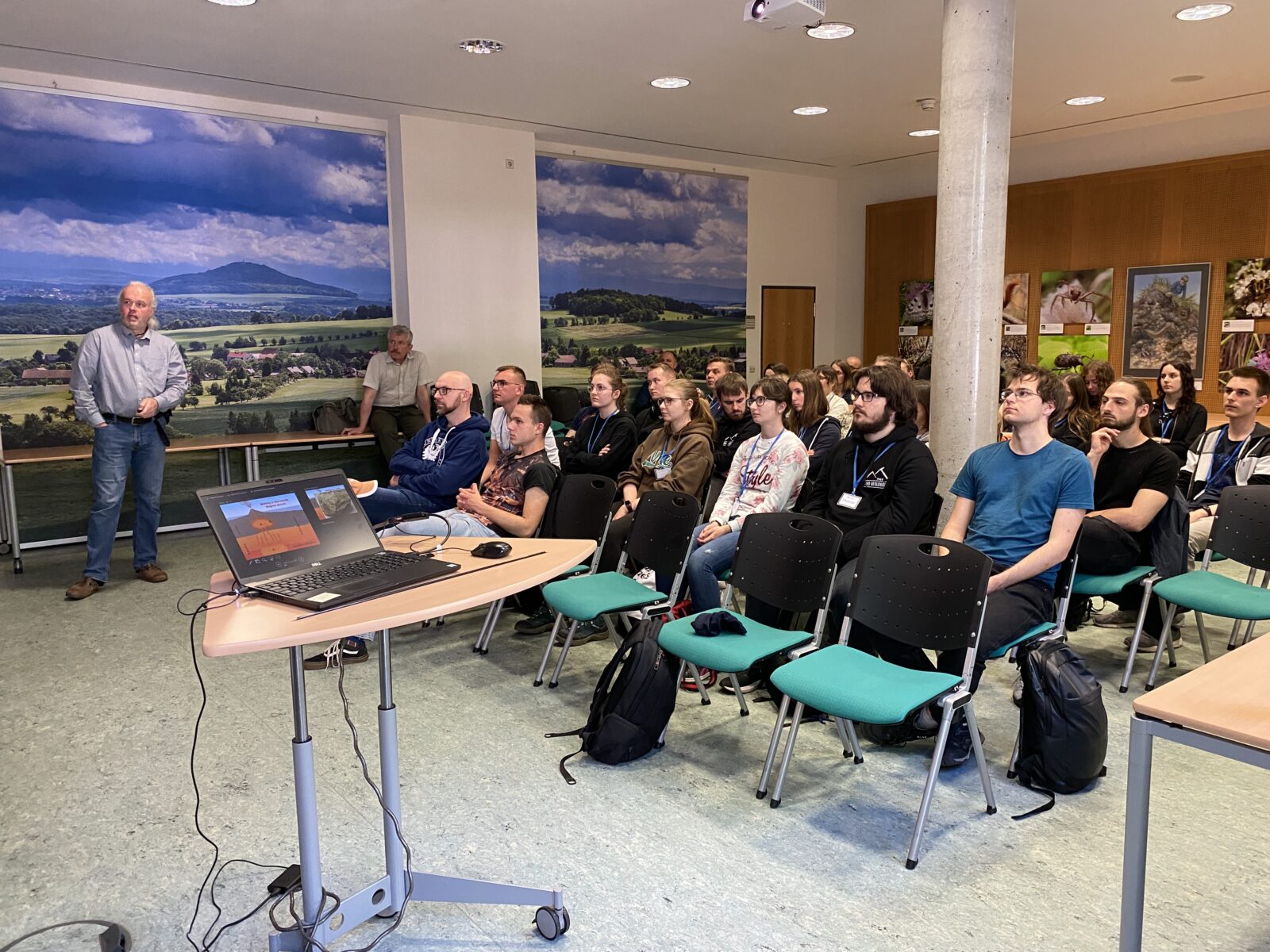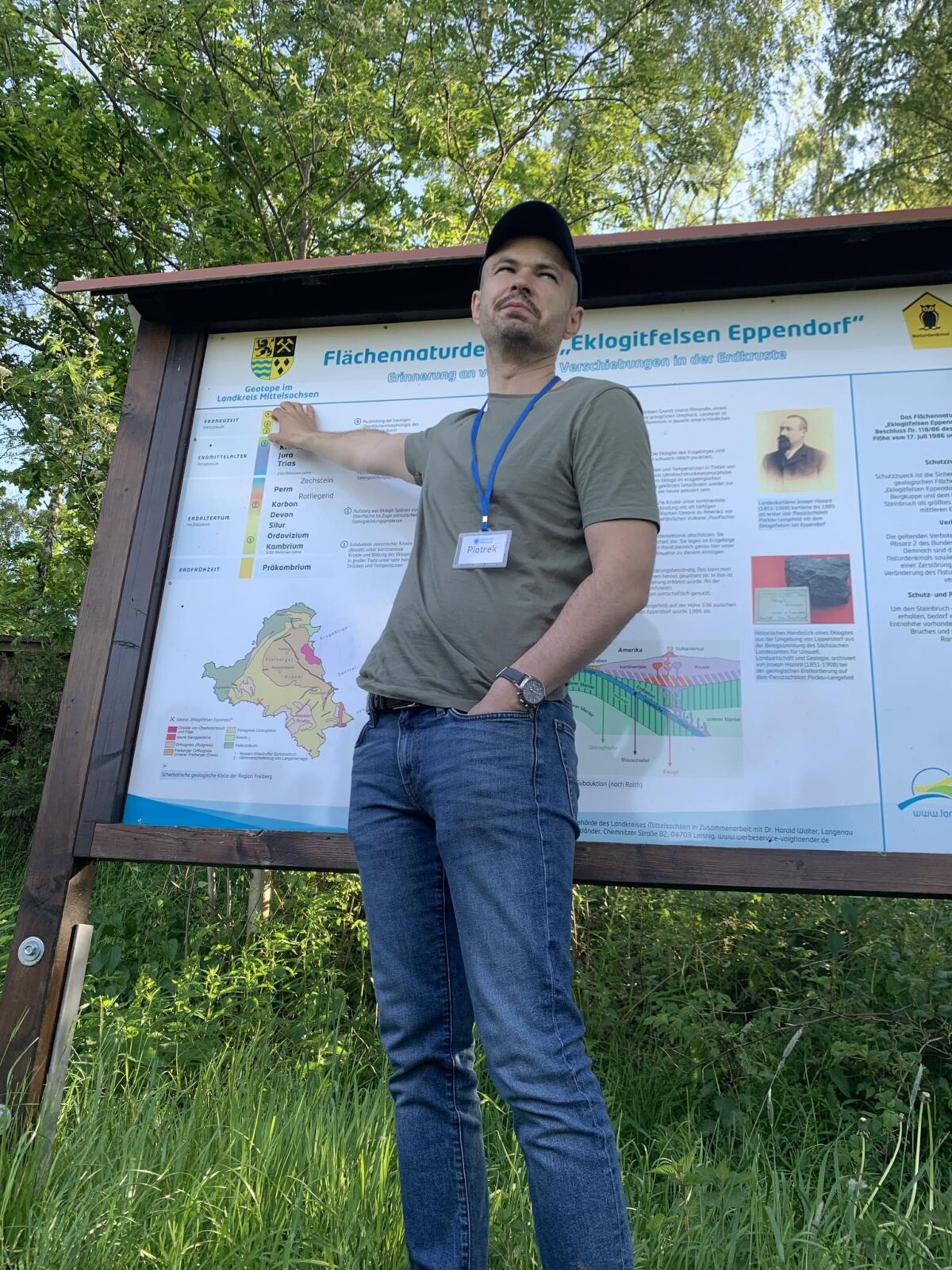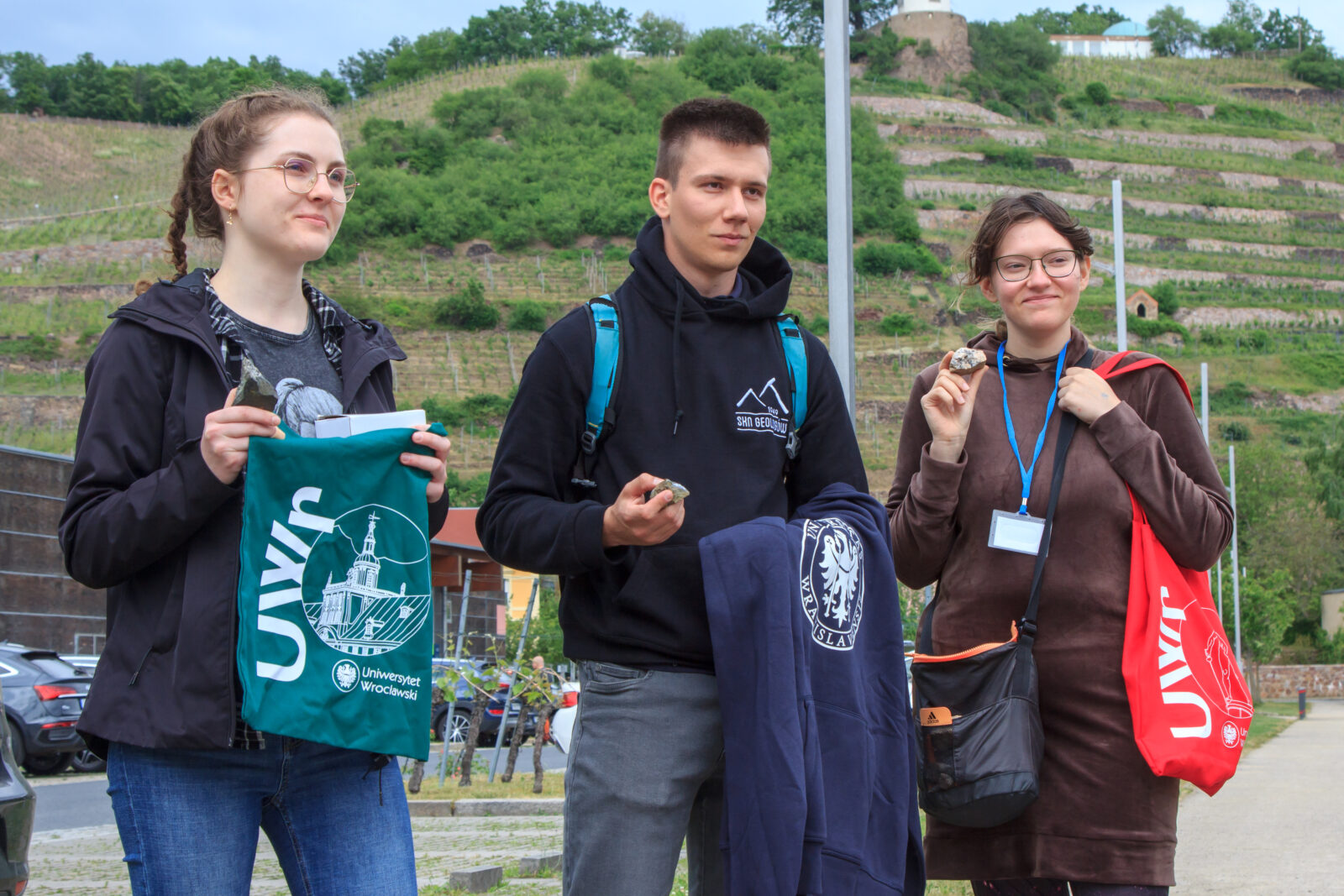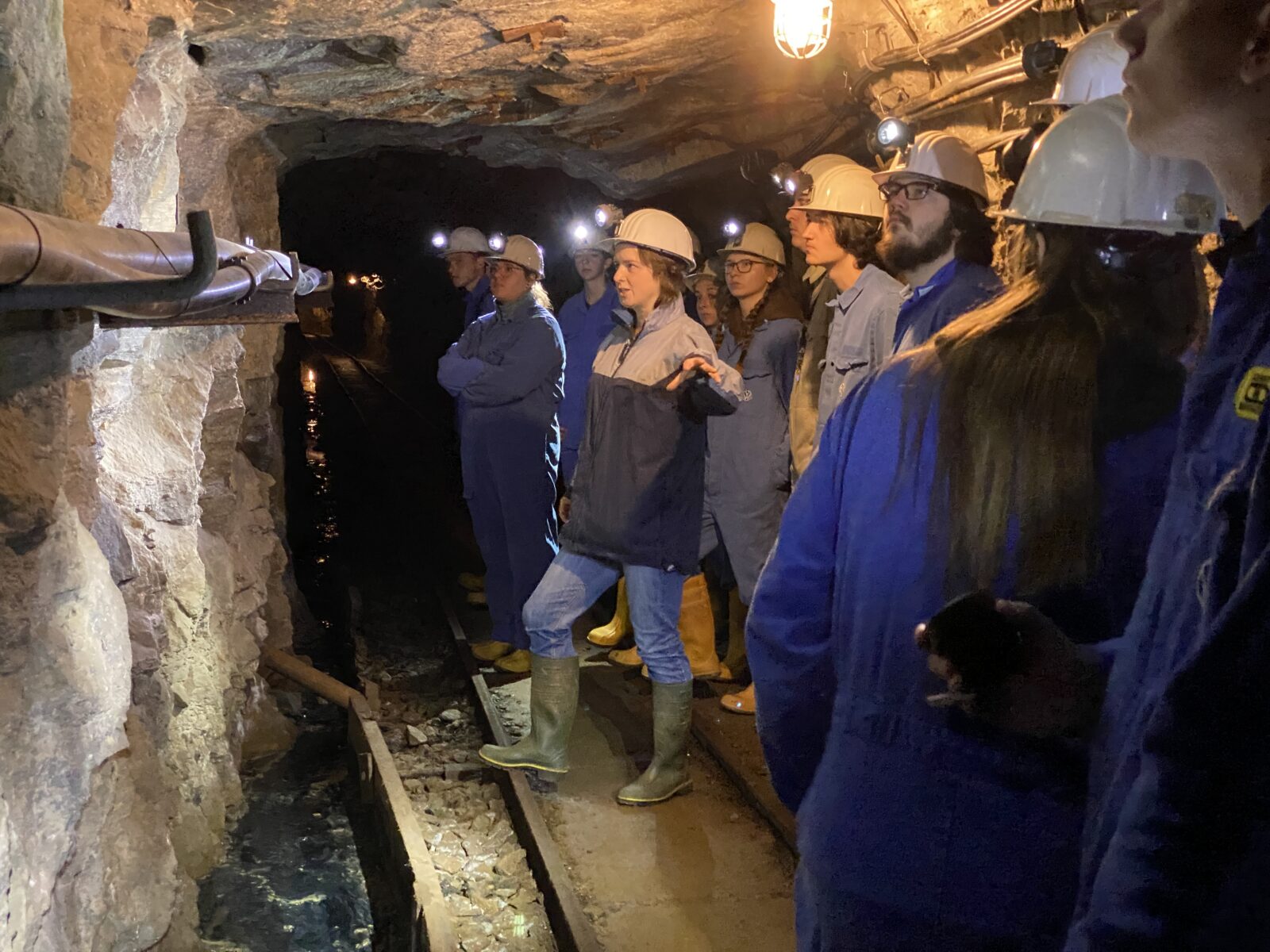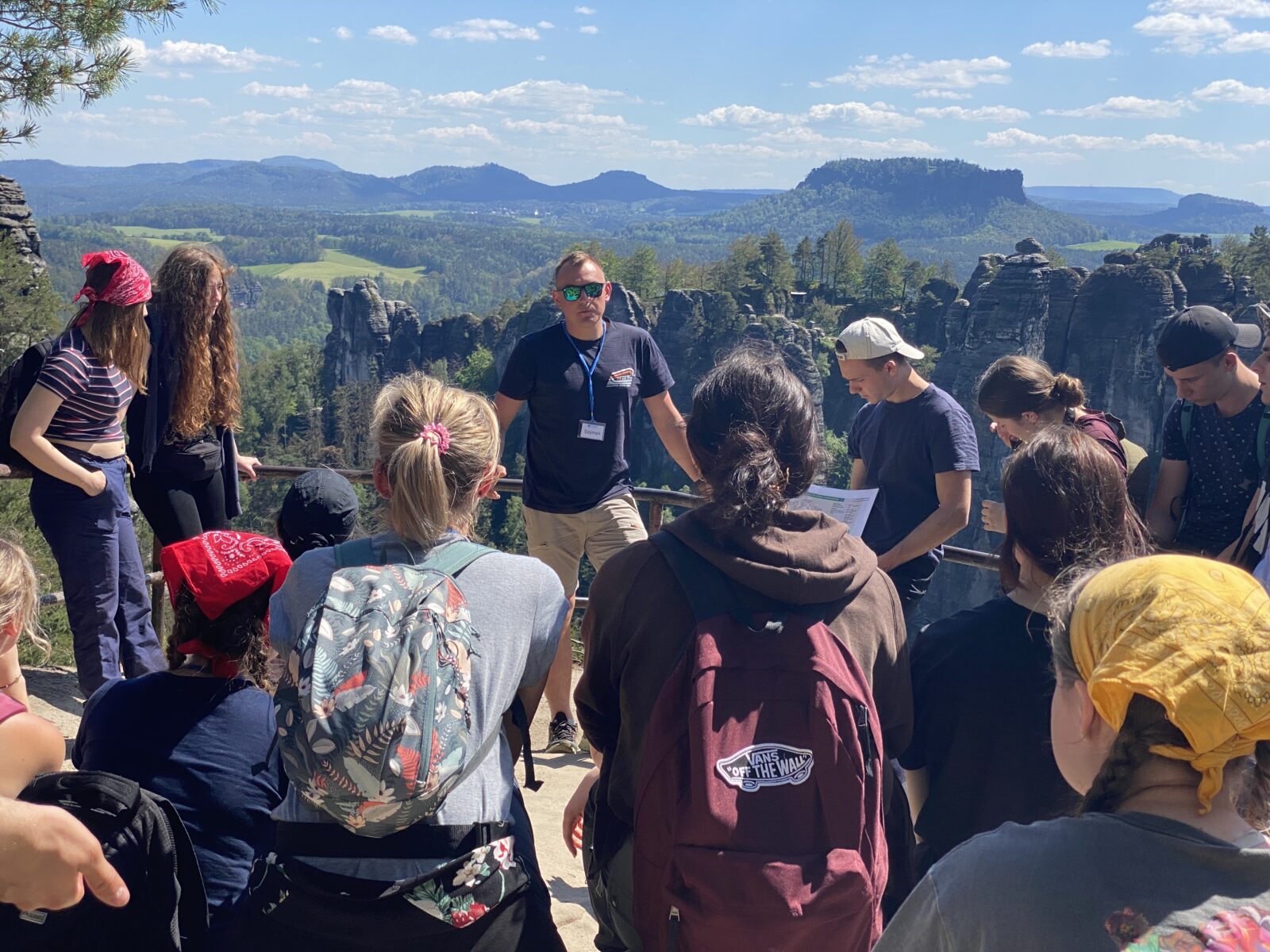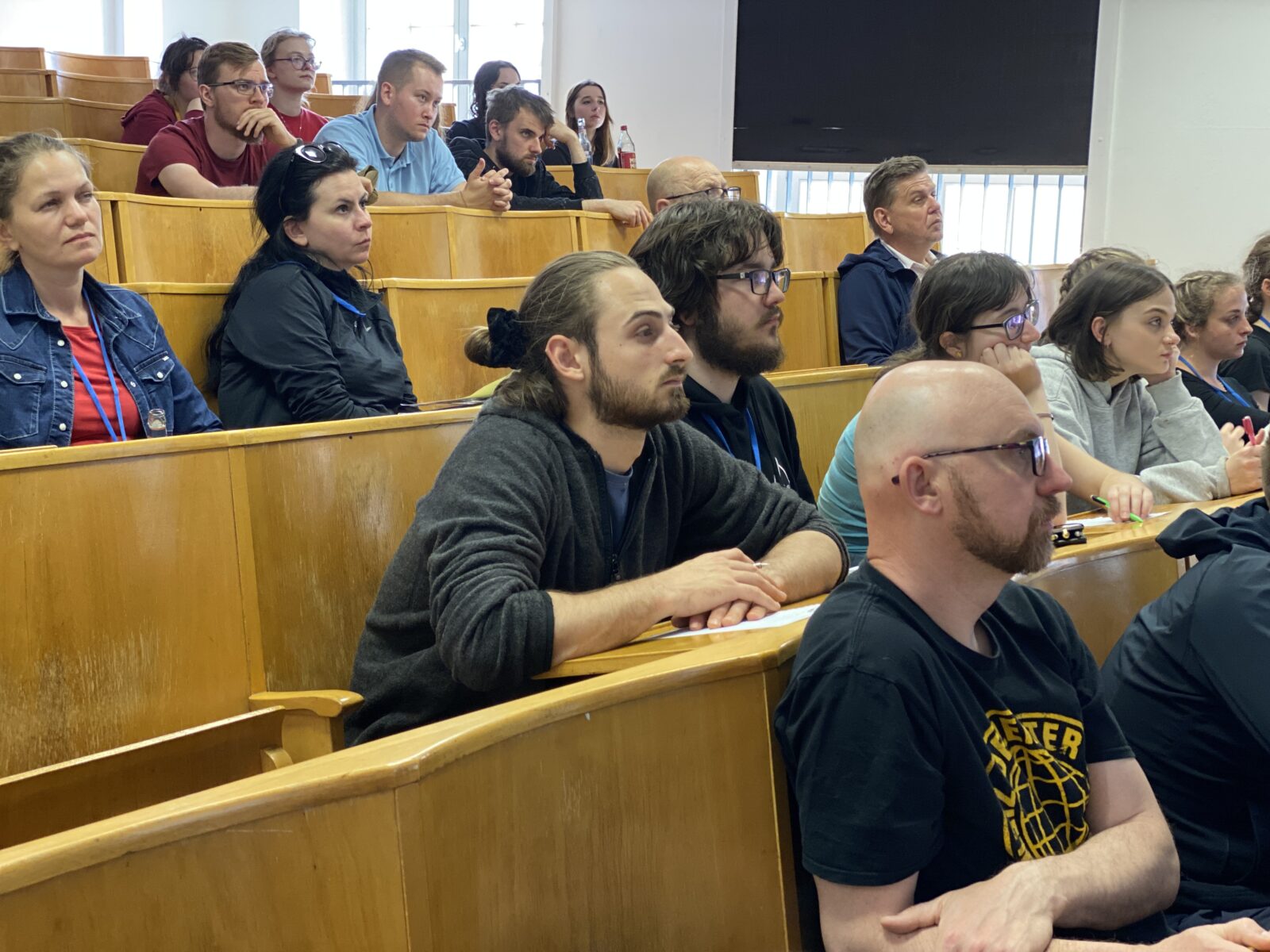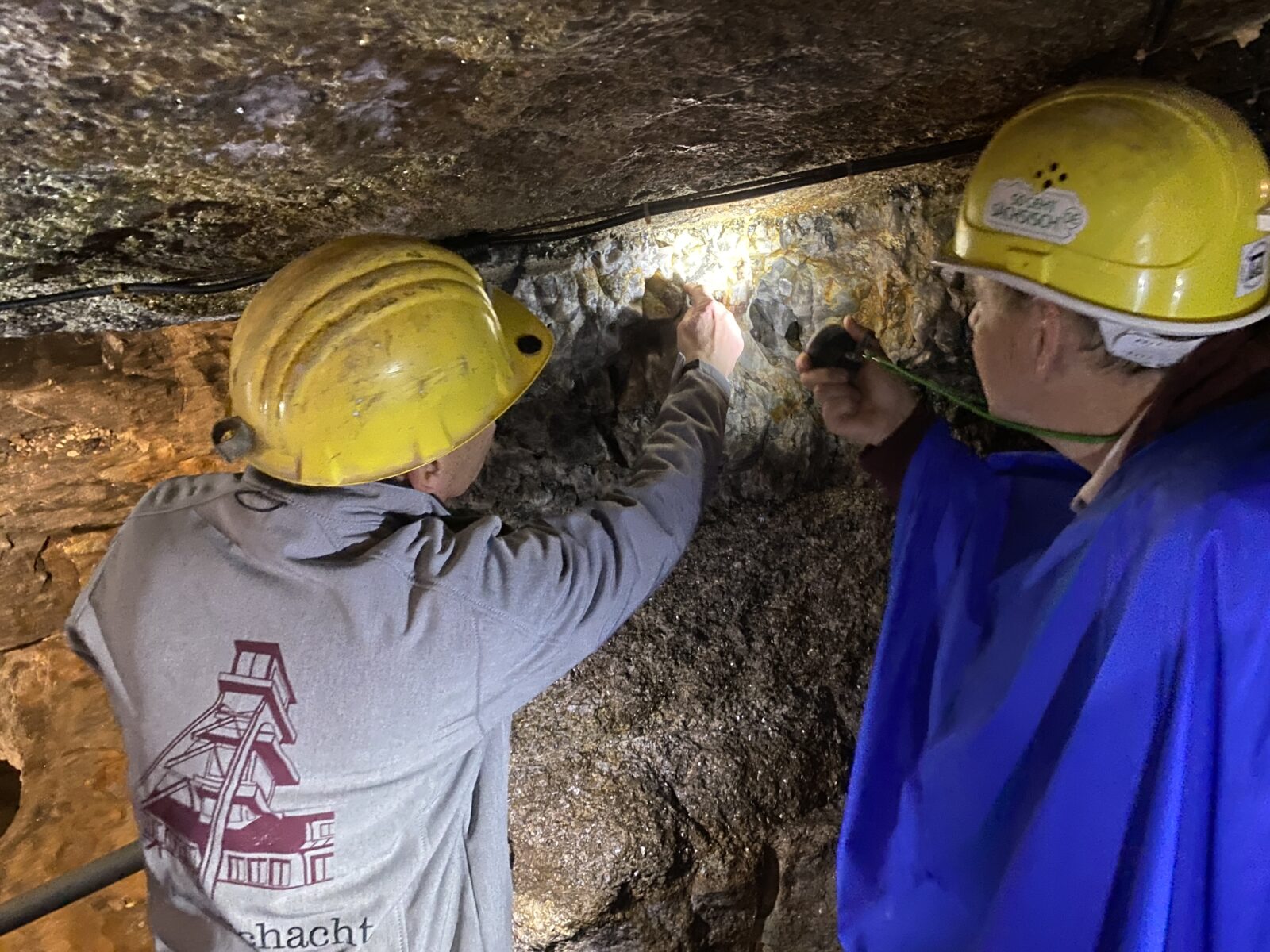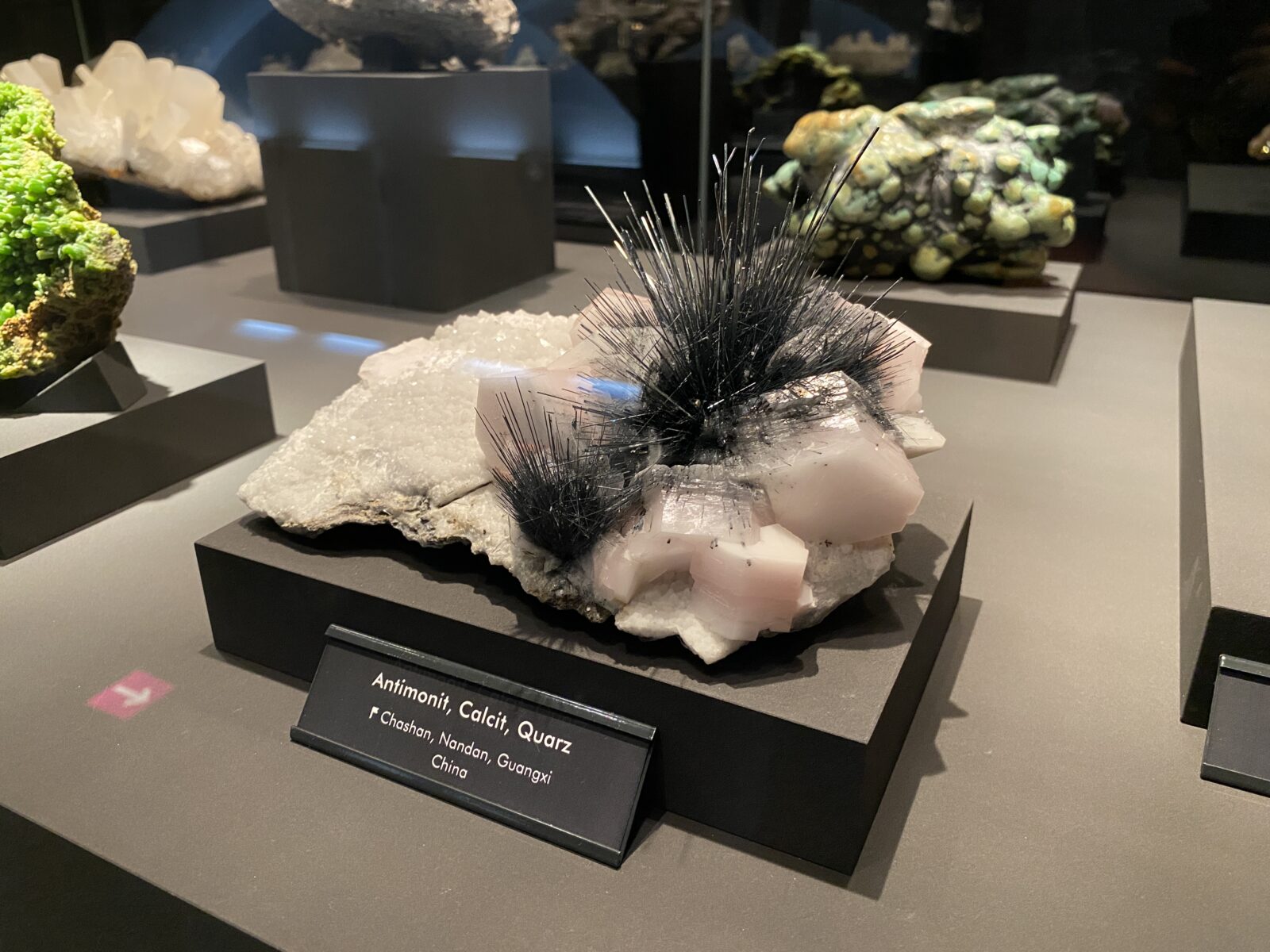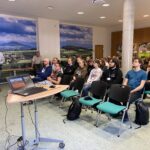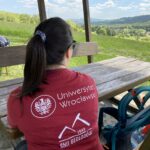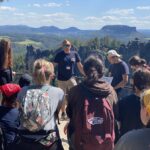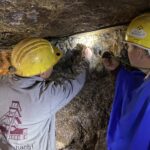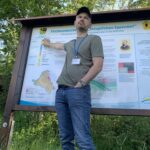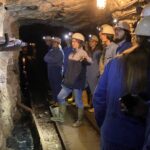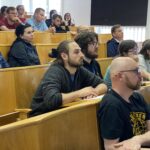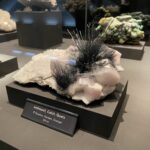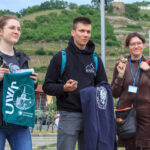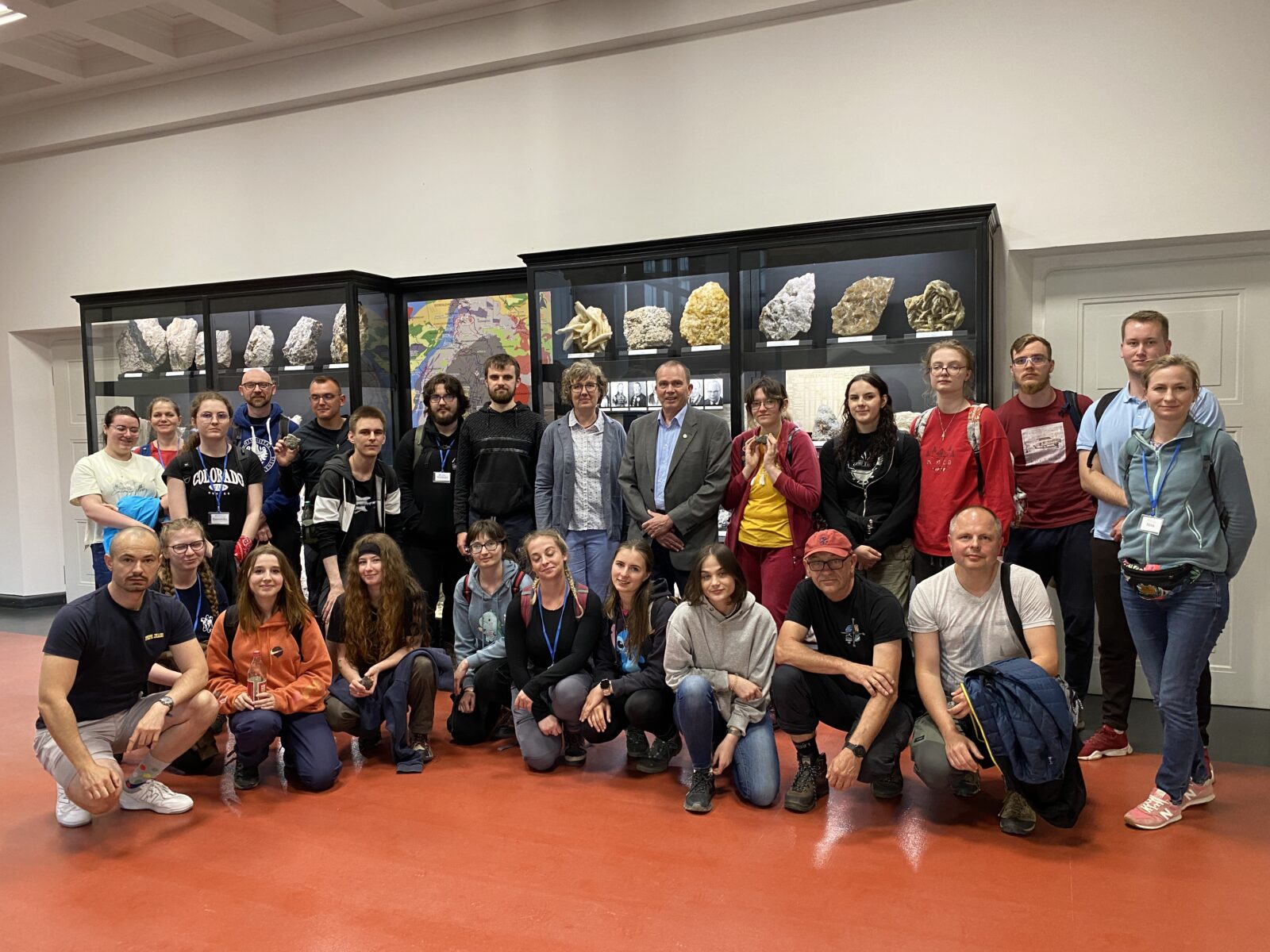
The Wrocław Workshop of Geology
The Wrocław Workshop of Geology is an educational project conducted at the Institute of Geological Sciences since 2020, which includes the organization of optional field practice and classes supplementing the educational content of geological studies. The main assumption of these classes is to organize them not only outside the University, but also outside Lower Silesia and the Sudetes, where field practices are usually held. This means that each edition of the workshop takes place in a different location, allowing teaching activities to also take place in regions that are less obvious in terms of geology. Two editions of the workshop are held each academic year, and the latest, the seventh edition, was held in Saxony and organized by dr Piotr Wojtulek. The workshop provided an opportunity for our scientists and students to meet with staff from friendly institutions in the field of geology in Saxony, especially from the oldest university of mining sciences in the world – Technische Universität Bergakademie Freiberg. The event happened to occur at this year’s 25th anniversary of cross-border cooperation between Lower Silesia and Saxony and was supported by co-financing of teaching initiatives by the Vice-Rector for teaching of the University of Wrocław.
The first point of the workshop in Saxony was the city of Görlitz and The Senckenberg Natural History Museum, where our group of 24 students and 6 researchers was welcomed by dr Jörg Büchner, a volcanologist and specialist in the geological structure of the Lusatian block. Dr. Büchner presented our students with a lecture on the Cenozoic volcanism of the Eger Rift, a relatively young geological structure formed as a result of the collision of the African and Eurasian plates, which led to the formation of the European Cenozoic Rift System. After the lecture and visiting the geological exhibition at the Senckenberg Museum, the group went to Landeskrone Hill, overlooking the whole Görlitz region, which is a remnant of a former volcano. On the slopes of Landeskrone there are magnificent volcanic rock exposures, showing features such as scoria, lava lake and basalt columns. After the volcanology class, workshop participants traveled to Bautzen (Budziszyn).
The second day of the workshop covered two topics. The first was about the Cadomian orogeny, which took place between the Middle Neoproterozoic and Cambrian (750 – 530 Ma). The rocks formed during this orogeny are very well exposed in the Lusatian block, where Cadomian greywackes and granodiorites can be found. And it was the exposure of granodiorites on Grosse Picho Hill near Wilthen that became the venue for another lecture by dr Dawid Białek on the Cadomian orogeny. In this exposure, not only granodiorite was to be found, but also basalt and gabbro intruding into this rock, often enriched with nickel sulfides. Afterwards, the workshop participants went to Rathen, a village nearby the antecedent valley of the Elbe River, where the Saxon Switzerland National Park is located, with one of the most famous monuments in Switzerland – the Bastei Bridge. And it was the sandstone formations creating various geomorphological forms particularly in Saxony that became the topic of the next lecture presented by dr Szymon Belzyt. The lecture mainly discussed the sedimentary nature of sandstone formation. After visiting Rathen and taking the Elbe ferry, the group went to Dresden for an overnight stay, which also provided the students with an opportunity to visit the capital of the state of Saxony.
Saxony, which is a land with a very interesting geological structure, is located in the eastern part in the Lusatian block. In the western part of the land, the Ore Mountains (Erzgebirge) are considered to be an important mountain range. The name of this part of Saxony comes from the presence of numerous metal deposits in this area, exploited in the local mines. Currently, the only operating underground mine in this area is the Niederschlag mine, known for fluorite and barite exploration.
As part of learning about the geological structure of the Ore Mountains (Erzgebirge), an important element of the workshops was a visit to the tin, tungsten and lithium ore mine in Zinnwald. The Zinnwald-Cinovec deposit is the largest lithium resource in Europe, which was exploited until the early 1990s, especially for tin. It is a unique place where you can admire greisen, or granite rocks that have undergone metasomatic transformation processes. Greisen, a rock rich in topaz and quartz, is a very important source of metals for the economy. A project is currently underway to restart production at the Zinnwald mine for lithium, a very important metal for an economy betting on the development of electromobility. It is an essential component of lithium-ion batteries. Prof. Wolfgang Schilka, a retired mining professor from TU Bergakademie Freiberg and Mining Director of the Zinnwald during its operation, told workshop participants about the importance of lithium, as well as the structure of the Zinnwald deposit. This experienced geologist and miner showed Wrocław’s geology students the best rock exposures showing how greisenization processes take place.
The Ore Mountains region is known not only for its metal deposits, but also for rocks that have undergone ultra-high-pressure metamorphism (UHMP). Some of the pressures experienced even led to the formation of diamonds in these rocks. And it was the diamond-bearing eclogite granulites that were also on the workshop plan. These rocks are exposed near Forchheim, while classic eclogites can be admired in Eppendorf. The mechanisms leading to the formation of this type of rocks were discussed by dr Piotr Wojtulek, and the lecture was also an opportunity to discuss the German system for the protection of inanimate nature in the form of the so-called geotopes. Geotopes are natural geoscientific monuments worthy of protection. Another topic discussed during the visit to Forchheim was the functioning of the Saidenbach Dam which reservoir supplies drinking water. Due to the fact that the exposure of diamond-bearing granulites is located near one of such hydrotechnical facilities, it became an opportunity to discuss solutions ensuring access to water in Saxony, which, as a land located in the area where crystalline rocks (igneous and metamorphic) occur, only has small groundwater resources and must retain as much water from precipitation as possible. This topic was discussed by dr hab. Sebastian Buczyński.
The geological structure of the Ore Mountains is not only eclogites and granulites, but mainly gneisses. Gneisses are metamorphic rocks rich in quartz, feldspar, and mica and are an important source of metal deposits in the Ore Mountains area, for example, zinc, lead, and silver. The largest deposit of these metals is the Freiberg deposit, where they have been exploited for many centuries. The remnant of the exploitation is the Reiche Zeche mine, which currently belongs to TU Bergakademie Freiberg as a research and teaching facility. A lecture about the Freiberger Type Deposits and the history of silver and lead mining in this area was given by dr. Christin Kehrer. Going underground to the 150m deep was also a big attraction for workshop participants, as were the interesting blue protective suits in which we toured the mine.
The summary of all the information that was provided in the field regarding the geological structure of the Ore Mountains and the Lusatian block was a lecture by prof. Bernhard Schulz, Associate Professor of Petrology at the Chair of Mineralogy and Petrology at TU Bergakademie Freiberg. Professor Bernhard Schulz has been a friend of the scientists of the Institute of Geological Sciences for many years, with whom our employees have carried out very numerous successful scientific projects. As an experienced petrologist of metamorphic rocks and during classes with our students he showed, among other things, how monazite can be used to date metamorphic processes. An important part of the lecture was also a discussion of automated mineralogy techniques that facilitate geological interpretations. The second lecture was given by dr Sandra Birtel from Helmholtz Institute Freiberg for Resource Technology, who discussed the functioning of this innovative institution dealing with modern technologies for obtaining mineral raw materials for the economy. Interestingly, both lectures took place at the Institute of Mineralogy, the same where many years ago, such outstanding German professors of geology as Friedrich Mohs (creator of the Mohs scale of mineral hardness), Abraham Werner (creator of the theory of Neptunism), and Clemens Winkler, discoverer of the element germanium, and Alexander von Humboldt himself studied here! TU Bergakademie Freiberg is the oldest university of mining sciences in the world, founded in 1765, which also educated the first geologists in Poland, sent here to study by King Stanisław August Poniatowski.
Freiberg, a town with just over 40,000 inhabitants and the administrative seat of Mittelsachsen district, was the main base of the workshops. It is a town with a very rich history dating back to 1162, marked especially by the mining of silver ores, which were discovered here only six years later. In Freiberg, by the way, geology and mining are visible at every turn, and not just historically. An example of how geological subjects can be presented to a wider audience in a modern way is the Terra Mineralia exhibition, which exhibits a phenomenal collection of minerals by German businesswoman Erika Pohl-Ströhe. In order to locate the collection in Freiberg, the city at one time entered a competition in which it proposed the local Freudenstein Castle as the site for the exhibits. Today, the Terra Mineralia exhibition includes not only wonderful specimens of minerals from various continents, but also innovative techniques of their presentation, which could also be studied during the workshops. It is safe to say that it is a big magnet for tourists.
The last classes in the workshops were a combination of knowledge in the field of regional geology regarding the Meissen granitoid massif and winemaking. We discussed the influence of the soil on vines and products made from their fruit in the area of the city of Radebeul, in the Elbe Valley, a suburb of Dresden. The largest wine producer in this area is Wackerbarth Castle, where workshop participants listened to a lecture by the vineyard employee, Klaus Junghans, who, in addition to discussing the soil profile and the subsoil covered by vines in this area, also showed the wine production process on a large scale. We also used the stop in Radebeul to organize a traditional competition for the best sample collected by students during the workshops. The competition involves each participant choosing the best sample they collected during the exercises, and then all participants, including the hosts, vote for the best sample. In these democratic elections, the winner was the zinc and lead ore from the Reiche Zeche mine by Tomasz Starzyk, a first-year master’s student in Geological Engineering; second place went to Dominika Łuszczek for a sample showing the contact of Cadomian granodiorite and basalt, and third place went to Karolina Strużyńska for a sample of greisen with beautifully formed zinnwaldite.
Translated by Maja Szczęśniak (student of English Studies at the University of Wrocław) as part of the translation practice.
